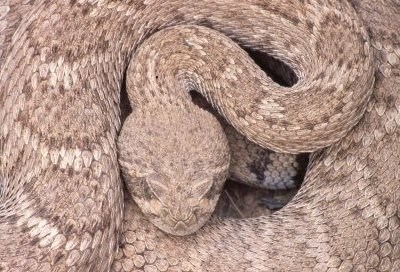 Environmental & Science Education
Environmental & Science EducationSTEM
Behavior
Biodiversity
Biological Evolution
Edward Hessler
I've run across two of the videos below several times. They show encounters between rattlesnakes, the common sidewinder, and kangaroo rats. The research was done by a team from UC-Riverside, San Diego State University, and UC-Davis. The team includes two PhD candidates. Two papers describing the research have been published but the one I have full access to was published in Functional Ecology (March 27, 2019).
This link may not be available to you--I don't know the limits of my access through Hamline University. I hope that access extends to you because you can read how the work was done as well as the research design. The good news is that the University of California-Riverside press release is available to one and all. It is by Igbal Pittalwala, and includes links to the four videos from this paper (+ 3 more), more information, and photographs of the research team.
In the introduction to this paper, the authors note that "Many snakes are sit‐and‐wait predators that may be particularly amenable to field observations in this context due to their tractability in radiotracking and field videography ; such species could serve as a model system for understanding factors that affect the dynamics of sit‐and‐wait predator–prey interactions. Rattlesnakes (Crotalus spp.) are classic ambush predators that hunt by remaining nearly motionless in hiding for prolonged periods. Rattlesnakes occasionally consume kangaroo rats (Dipodomys spp.), common desert‐dwelling mammals renowned for their explosive antipredator jumping ability. Interactions between rattlesnakes and kangaroo rats follow the typical pattern of sit‐and‐wait predation: a snake waits in ambush to strike at prey that gets too close, at which point the prey either is struck or initiates a successful evasive manoeuvre." (Literature citations removed.)
The results section of the paper begins with some fundamental findings. A total of 32 strikes were recorded from 13 snakes (1–3 per snake, median = 3 observations/snake), 15 of which resulted in bite. Of the 15 bitten kangaroo rats, 8 avoided subjugation (survived without apparent effect of envenomation) and 7 died from envenomation and were consumed by snakes. Of the 17 misses, 6 were inaccurate strikes and 11 were accurate strikes that missed due to the kangaroo rat moving out of the way prior to the snake being able to embed its fangs.
The paper's title is Determinants of Predation Success: How to Survive an Attack from a Rattlesnake. Reaction times indicate that speed is one factor.

The authors found that "snake attacks spanned < 308 ms (milliseconds) in our study," while "reaction times to rattlesnakes spanned from 40-160ms." You may wonder about the difference. The authors propose a hypothesis. "It is possible that this dramatic difference in reaction times results from snakes using strike movements that minimize sound or air disturbance, resulting in a more delayed reaction when compared to a less 'camouflaged' rapid attack. More empirical work is necessary to address this hypothesis experimentally."
The second paper published in the Biological Journal of the Linnean Society (27 March 2019) focuses on the evasion of rattlesnake bites. The abstract to the paper concludes "In general, our findings support the idea that bipedalism, which has evolved independently in several desert rodent lineages might be favoured because it allows for rapid and power vertical leaps that are crucial for avoiding ambush predators, such as vipers and owls."
Igbal Katalawa's press release is found here. As you watch the films you may end up calling the Kangaroo Rats, as others have, "Ninja Rats." They are adept at swiftly kicking rattlesnakes.

 CGEE Student Voice
CGEE Student Voice
No comments:
Post a Comment